Introduction
iPhone 6 vs Nokia 1020: Better imaging all around from Apple
With its massive 41Mp sensor and some of the best images with respect to noise and detail preservation when shooting under extreme low light, the Nokia 1020 is a great option for shooting stills. So many people have wondered why it only achieved a DxOMark Mobile score of 74, ranking well behind the iPhone 6 with the latter’s score of 82.
The Nokia 1020 excels in noise and texture, but a few strong weaknesses drags down its overall score.
If we take a closer look at the Mobile Video scores for the two devices, the iPhone 6 scores significantly higher, with a DxOMark Mobile Video score of 80 compared to 64 for the Nokia 1020.
iPhone 6 vs Nokia 1020: Photo results are very close
If we look in more detail at the DxOMark Mobile Photo scores for both devices, we see that the results for still image quality are much closer. The new iPhone 6’s DxOMark Mobile Photo score of 83 still trumps the Nokia 1020’s score of 79.
The DxOMark Mobile Photo sub-score is a combination of results across 7 Mobile Photo categories that include Noise, Detail, Flash, Color, Exposure & contrast, Autofocus, and Artifacts. Evaluating image quality across these different aspects provides an indication of the overall image quality for a device, which is then defined by a single score. So while the Nokia 1020 comes in first for noise and texture, the new iPhone 6 is ahead in the other 5 categories, resulting in a higher Mobile Photo score than the Nokia 1020.
iPhone 6 vs Nokia 1020: Colder white balance and color shading on the 1020
Auto White Balance and color rendering are important areas of image quality, as they are one of the first things a viewer notices in a picture. These results therefore are weighted in our results, and the new iPhone 6’s algorithm works extremely well, with strong vivid colors and a neutral white balance compared to the cold cast on pictures from the Nokia 1020. Color shading is also better controlled on the iPhone 6, with images from the Nokia 1020 displaying strong color shading whether shot in good light, but particularly in low-light conditions.
|
Apple iPhone 6 |
Nokia Lumia 1020 |
iPhone 6 vs Nokia 1020: Nokia 1020 excels in extreme low-light
The Nokia 1020 scores 97/100 compared to 87/100 for the iPhone 6.
Shooting in low light is where the Nokia 1020 really comes into its own, scoring a whopping 80/100 compared to just 56/100 for the iPhone 6.
The same can be said for noise performance, where again the Nokia 1020 clearly excels by recording good resolution when shooting in extreme low-light conditions.
The advantage of the Nokia 1020 for noise and texture is explained by its sensor size, as it uses a larger 1/1.5” camera module compared to the iPhone 6’s 1/3” unit.
Apple’s noise reduction algorithms are very good and narrow the gap between the two devices. It is worth noting that the iPhone 6’s large pixel pitch (compared to the Samsung S5 for example) helps, too.
This said, the Nokia’s noise algorithms for the 1020 are also excellent, resulting in detail preservation in extreme low-light that can compete with the image quality of some compact cameras.
|
Apple iPhone 6 (1/15 sec) |
Nokia Lumia 1020 (1/5 sec) |
iPhone 6Plus (1/4 sec) |
In addition to noise and detail performance, the Nokia 1020’s sensor size advantage over the two iPhone 6s helps it to achieve very good exposure and contrast results in very low-light conditions.
In brighter lighting conditions (>10 Lux), the iPhone 6’s images have better exposure and higher levels of contrast.
iPhone 6 vs Nokia 1020: Strong difference in video quality
While the Nokia 1020 excelled for Video exposure and contrast, with good texture under bright lighting conditions, it wasn’t a match for the iPhone 6 in any of the other video categories. Video from the Nokia 1020 displayed noticeable row noise and blocking artifacts, with autofocus oscillations visible during refocusing, and walking movements remaining uncorrected by the stabilization system.
This all added up to a far superior video ranking for the iPhone 6, which was a significant factor in boosting its overall DxOMark Mobile score above that of the Nokia 1020.
With the release in 2014 of new flagship Smartphones from three major players in the industry, there has been some jostling for position at the top of the DxOMark Mobile leader board.
Released back in February 2014, Samsung’s Galaxy S5 took the coveted top spot on the leader board with 79 points. Our initial review of the Galaxy S5 noted its good exposure and low levels of noise when shooting still images.
Just a couple of months down the line, Sony released an updated Xperia Z3. Despite minor modifications to the camera unit, including improved low-light capabilities and a maximum ISO sensitivity of 12 8000, the Z3 wasn’t able to better the overall score of 79 set by the S5.
So 10 days before the release of the iPhone 6, we had three cameraphones tied at the top of the DxoMark leader board.
The first two cameraphones to break through the 80-point barrier, Apple’s iPhone 6 and iPhone 6 Plus have set a new standard for overall image quality for Smartphones. This doesn’t necessarily mean it’s the right cameraphone for you, however, but this in-depth analysis of the three devices will help you make that decision.
iPhone 6 vs Sony Xperia Z3 & Samsung Galaxy S5: iPhone 6 a more complete camera
As previously explained under the Nokia 1020 comparison in this review, the DxOMark Mobile score is a combination of scores across both DxOMark Mobile Photo results and DxOMark Mobile Video scores.
If we look at this breakdown for the new iPhone 6, the Z3, and the S5, we can see that the iPhone 6 scores highest in both the DxOMark Mobile Photo & Video subsections, making it the more complete camera overall.
Samsung’s Galaxy S5 is slightly more consistent across its Photo and Video scores, hitting 80 and 79 points respectively. The S5’s Video score of 79 is just 1 point off the class-leading iPhone 6 (80 points), and as such this is one of the stronger aspects of the Samsung device. Although it’s very close with an overall Photo score of 80, the S5 ranks in 3rd place for these 3 flagship Smartphones just behind the Z3 and iPhone 6 with 81 and 83 points, respectively.
Sony’s Z3 provides very good photos and its DxOMark Mobile Photo score of 81 is marginally ahead of the Galaxy S5 and just a couple of points behind the new iPhone 6. The Z3’s video capabilities don’t hit the same heights, however, which has affected its overall DxOMark Mobile score, despite the fact the Z3 offers slightly better still photos than the Galaxy S5.
iPhone 6 vs Sony Xperia Z3 & Samsung Galaxy S5: Larger Sony sensor takes the lead in low-light
If we look more closely at detailed Photo scores across the 7 sub- categories, we start to get a clearer idea of the strengths and weaknesses of each device.
The 3 devices are very close for Exposure and contrast overall, but it’s worth noting the added benefit of using the iPhone’s HDR mode (activated in the default mode), which does an effective job of balancing the extremes of brightness.
|
Apple iPhone 6 |
Sony Xperia Z3 |
Samsung S5 |
In terms of autofocus accuracy, the new iPhone 6 is marginally ahead of the Z3 and is a significant improvement over the Galaxy S5, which struggles to keep pace. Although arguably a performance issue, the effectiveness of autofocus is key, as with no ability to focus manually, you have to rely on the accuracy of the cameraphone’s system.
For Color and Artifacts, there’s not much difference between the new iPhone 6 and Galaxy S5, but these are the areas in which the Z3 fails to keep pace. Sony’s device does excel for Noise, however, where it is clearly ahead of both the Galaxy S5 and iPhone 6. As with the Nokia 1020, this is again due to the larger sensor units built into the Sony devices, compared with the smaller camera module in the new iPhone 6.
Processing and noise reduction algorithms play a part, too, and while they are both great on the Xperia Z3 and Galaxy S5, the Z3 is simply a bit better overall for Noise.
So it’s fair to say the iPhone 6 isn’t the best choice for shooting in low light, which could be another significant factor for photographers choosing their next Smartphone. Shooting in bright light, however, the new iPhone 6 delivers some interesting results at its native 8Mp resolution.
Despite the iPhone’s lower resolution and smaller camera unit, in bright light it puts in a very respectable performance for Noise, which is only marginally behind both the Xperia Z3 and Galaxy S5. For recording Texture in bright light, the Z3 is clearly ahead, but again, the iPhone 6 matches the Galaxy S5 for some very respectable results.
So all 3 of these devices provide excellent image quality overall, but as we’ve seen, they all have different strengths and weaknesses, which should have a bearing on which Smartphone offers the best image solution for you and your photography.
iPhone 6 vs Sony Xperia Z3 & Samsung Galaxy S5: Great video stabilisation from the Z3
In terms of comparing video performance across the three devices, two areas stand out, Autofocus and Stabilization. Across the other categories, most users will be satisfied with the results for all of the devices.
For video autofocus however, the Galaxy S5 and the new iPhone 6 are clearly ahead of Sony’s Z3, which is slower and shows some perceptible oscillations, despite the efficient lens breathing correction.
In terms of video stabilization, however, the tables are turned and the Xperia Z3 offers better correction for walking movement than either the S5 or iPhone 6, although the difference is less pronounced here than with the Z3’s video focusing failures.


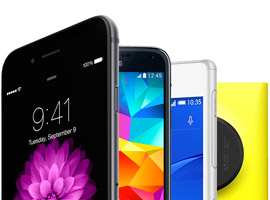


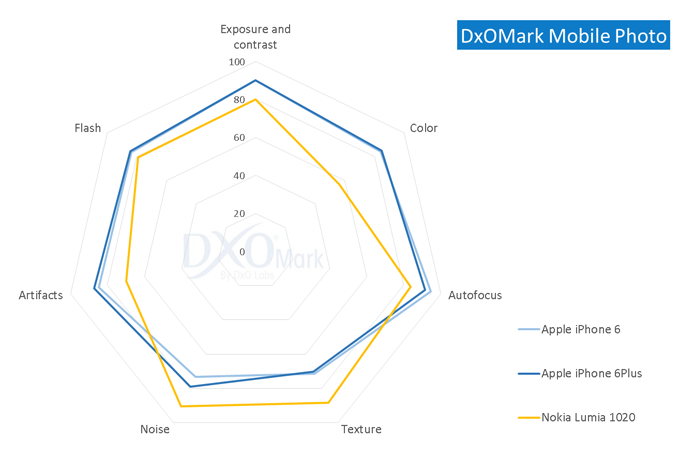

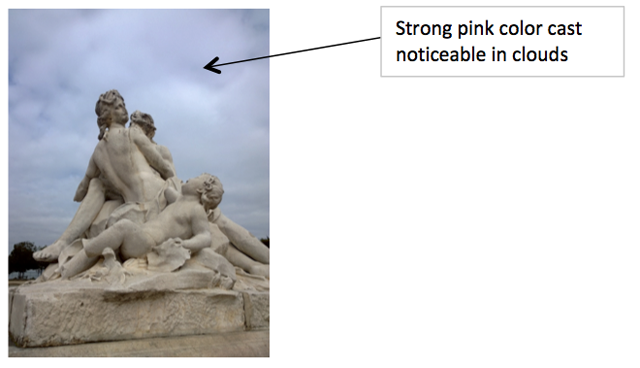
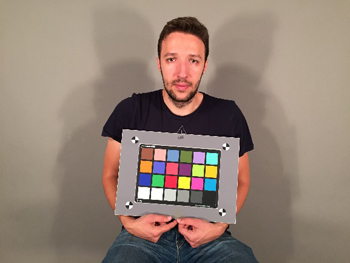
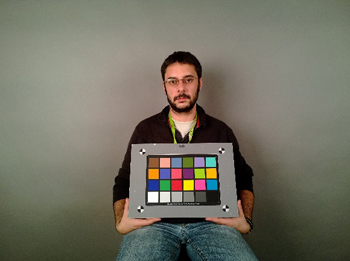
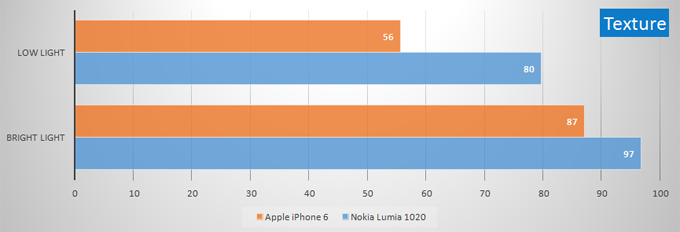
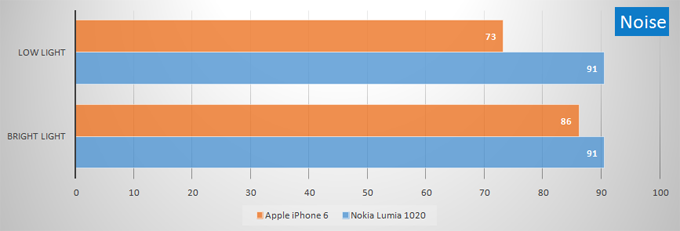




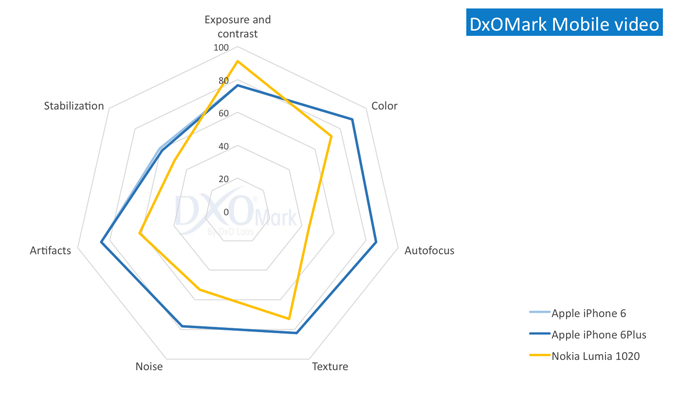




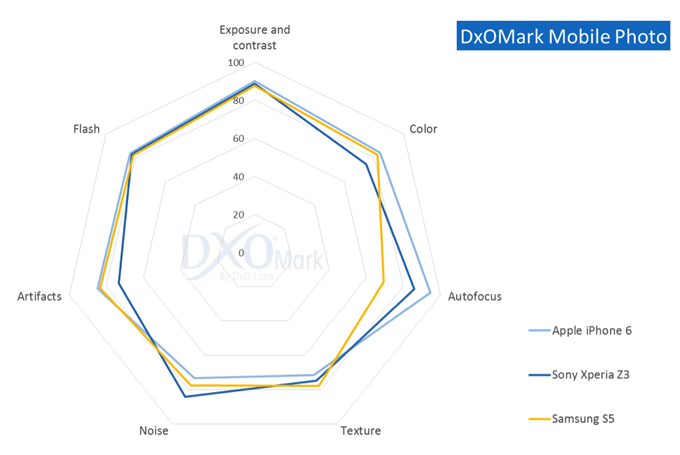



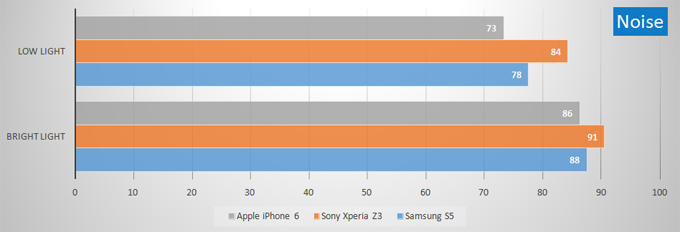
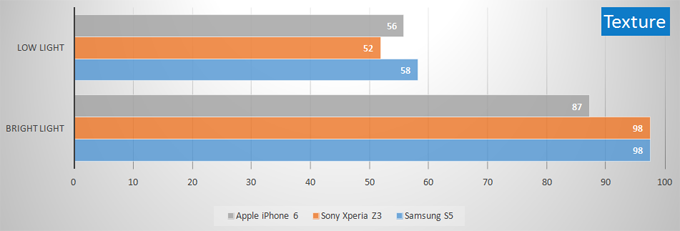
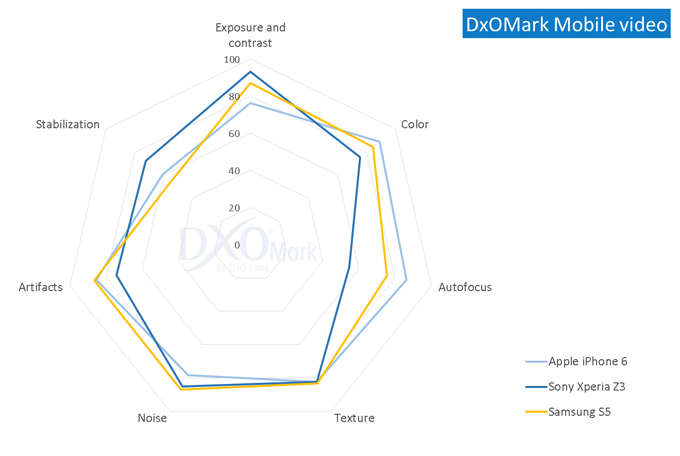
DXOMARK encourages its readers to share comments on the articles. To read or post comments, Disqus cookies are required. Change your Cookies Preferences and read more about our Comment Policy.